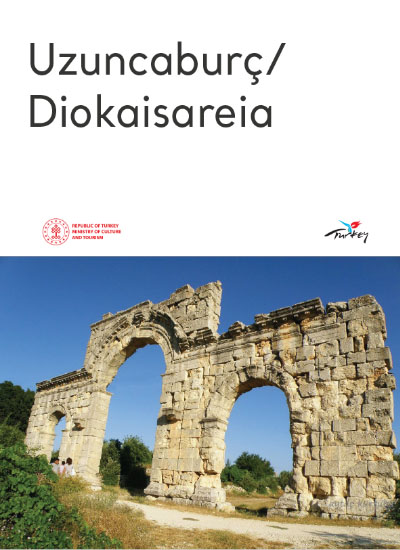The Uzuncaburç settlement, situated 30 km north of Silifke, served as the place of worship of the Kingdom of Olba during the Hellenistic Age. The Temple of Zeus Olbios, which was converted into a church in the 5th century AD, the 23-metre-high bastion, and the mausoleum with a pyramidal roof are the architectural remains from this period. The necropolis area, situated to the north of the city, was used during the Hellenistic, Roman and Byzantine periods. Following the separation of the city from Olba in 72 AD during the reign of the Roman Emperor Vespasianus, it became a new autonomous site, known as Diocaesarea (City of God-Emperor), which was permitted to print money in its own name. The architectural remains from this period include the colonnaded street, theatre, ceremonial gate, fountain, temple of Tyche (Goddess of Luck) and the Victory Gate. Two colonnaded streets intersect vertically within the city, with buildings aligned along these streets. The monumental gate at the beginning of the street in an east-west direction is 7 m high with five Corinthian columns still standing. Another monumental gate is located in the north of the city. The large entrance in the middle and two small arched entrances at the sides are still standing. The inscription on the gate states that it was damaged by the earthquake and was repaired during the joint rule of the Roman Emperors Arcadius (395-408 AD) and Honorius (395-423 AD). The well-preserved theatre, constructed in the 2nd century AD in the ancient city, is notable for its well-preserved remains, with a square plan measuring 5.5x5.5 m and a height of 15 m.
SİLİFKE UZUNCABURÇ ARCHAEOLOGICAL SITE


